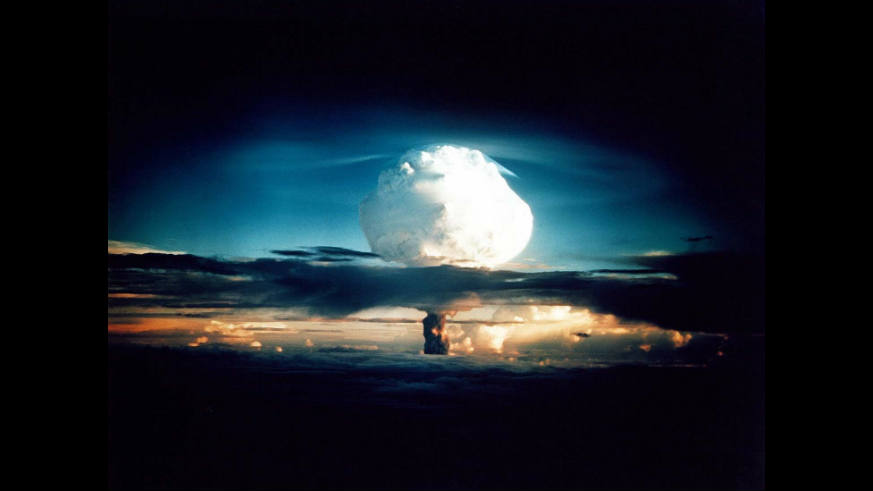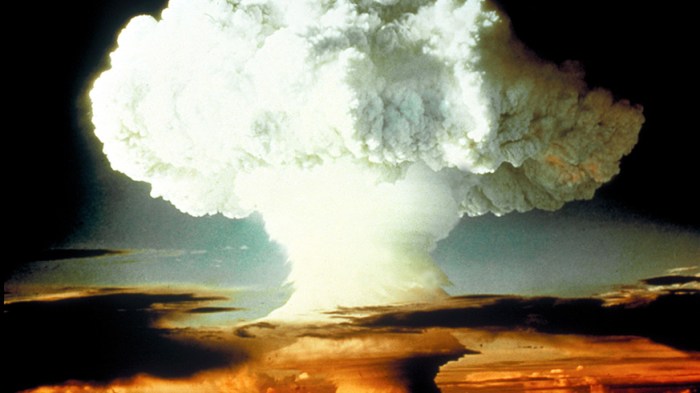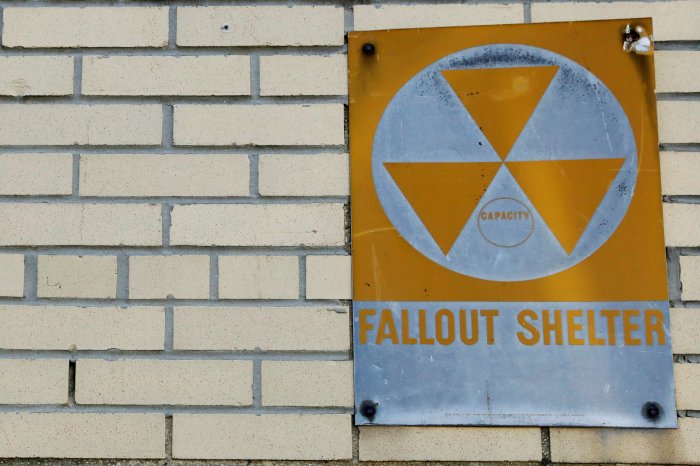On Saturday, thousands of people in Hawaii received an alert on their phones warning them of an incoming ballistic missile. They were told to seek immediate shelter and that “this was not a drill,” sparking panicked dashes to safety as people feared for their lives.
Thirty-eight minutes later, another alert came through revealing that the warning had been a false alarm.
For many, though, in Hawaii and beyond, that doesn’t mean their fear subsided. Ballistic missiles are primarily designed to deliver nuclear weapons, and the increased threat of nuclear attack has loomed over Americans for months.
“The risk of inadvertent nuclear war has risen to a level that is simply unacceptable,” U.S. Sen. Ed Markey said at a Harvard conference in November.
Google searches for terms like “how to survive a nuclear attack” have spiked during Donald Trump’s presidency, specifically after his comments concerning North Korea, like when he said in August that, “North Korea best not make any more threats to the United States. They will be met with fire and fury like the world has never seen.”
In the wake of that statement, experts warned that the Asian country was now even more likely to launch a missile at the United States — though some say it will still be a few years until North Korea is capable of launching a missile that far.
But with Hawaii’s false alarm over the weekend making that threat all-too-real to some residents, it begs the question, what can we actually do in the face of an incoming missile?
First, the tip in the alert is a good start: Seek shelter.
“If an attack warning is issued, take cover as quickly as you can, below ground if possible, and stay there until instructed to do otherwise,” reads Ready.gov, a FEMA and Department of Homeland Security site created to help people prepare for all sorts of disasters, including a nuclear blast. “Find the nearest building, preferably built of brick or concrete, and go inside to avoid any radioactive material outside.”
Though a nuclear blast may scene like an end-of-the-world type of scenario, experts say that recent research and federal planning guides show “that 100,000s of lives can be saved through adequate planning and knowledge about appropriate actions” people can take in the wake of a nuclear detonation.
What to do before a nuclear blast
Before the missile is even en route, there are a few steps you can take to be a bit more ready. Ready.gov advises people to build an emergency supply kit with all the basics, from water, non-perishable food, a battery-powered or hand-crank radio, a first aid kit, moist towelettes and more.
Along with that kit, experts believe you should prepare a “family emergency plan,” going over how you plan to receive any emergency alerts, where you aim to shelter, any evacuation routes and how to communicate with loved ones in the wake of an attack.
Your community may have some designated fallout shelters, as well, so look up if any public buildings will become shelters or make a list of places near you where you could go, like subway tunnels, your workplace or a school.
According to Ready.gov, there are three main factors for protecting yourself from the radiation and nuclear fallout following an attack: distance, shielding and time.
Distance yourself from the explosion
“The more distance between you and the fallout particles, the better,” experts warn.
That means seeking shelter underground if possible, because a basement will provide more protection than the first floor of a building.
Shield yourself from the fallout
Similar to distance, the more materials between you and the outside world, the better you’re shielded from the radiation and fallout particles.
Aim to get behind and underneath heavy, dense materials — like thick walls, concrete, bricks, books, and, ideally, the earth, experts say.
Wait it out
The last key to surviving is time.
“Fallout radiation loses its intensity fairly rapidly,” according to Ready.gov. “In time, you will be able to leave the fallout shelter. Radioactive fallout poses the greatest threat to people during the first two weeks, by which time it has declined to about 1 percent of its initial radiation level.”
Expect to stay inside for at least 24 hours after a blast, unless otherwise notified by government officials, and remain sheltered away from possibly radioactive materials outside.
If you’re outside during a blast
What if you can’t get inside in time or don’t have the adequate shelter? Make sure to first look away from the flash or fireball — it can blind you, experts say.
You should still take cover under anything that may offer some protection, and lie flat on the ground with your head covered. Though the explosion may have already happened, it could take 30 seconds or more for the blast wave to hit where you are, depending on how far away it is.
“Remember that any protection, however temporary, is better than none at all,” according to Ready.gov, “and the more shielding, distance and time you can take advantage of, the better.”
Get clean as soon as possible after the blast and seal up contaminated clothing in a bag to keep any radioactive material from spreading — “Removing the outer layer of clothing can remove up to 90 percent of the radioactive material, according to FEMA — and then still seek out shelter.
If you were outside during the blast, showering will help you get clean, though experts warn not to scrub or scratch your skin while using “lots of soap and water.” Use shampoo in your hair, but not conditioner, “because it will bind radioactive material to your hair, keeping it from rinsing out easily.” (Nobody said that the apocalypse would be pretty).
Finally, keep listening for any news about what to do and what areas to avoid when you come out of your shelter. More tips from FEMA and Homeland Security are available on their websites.



















